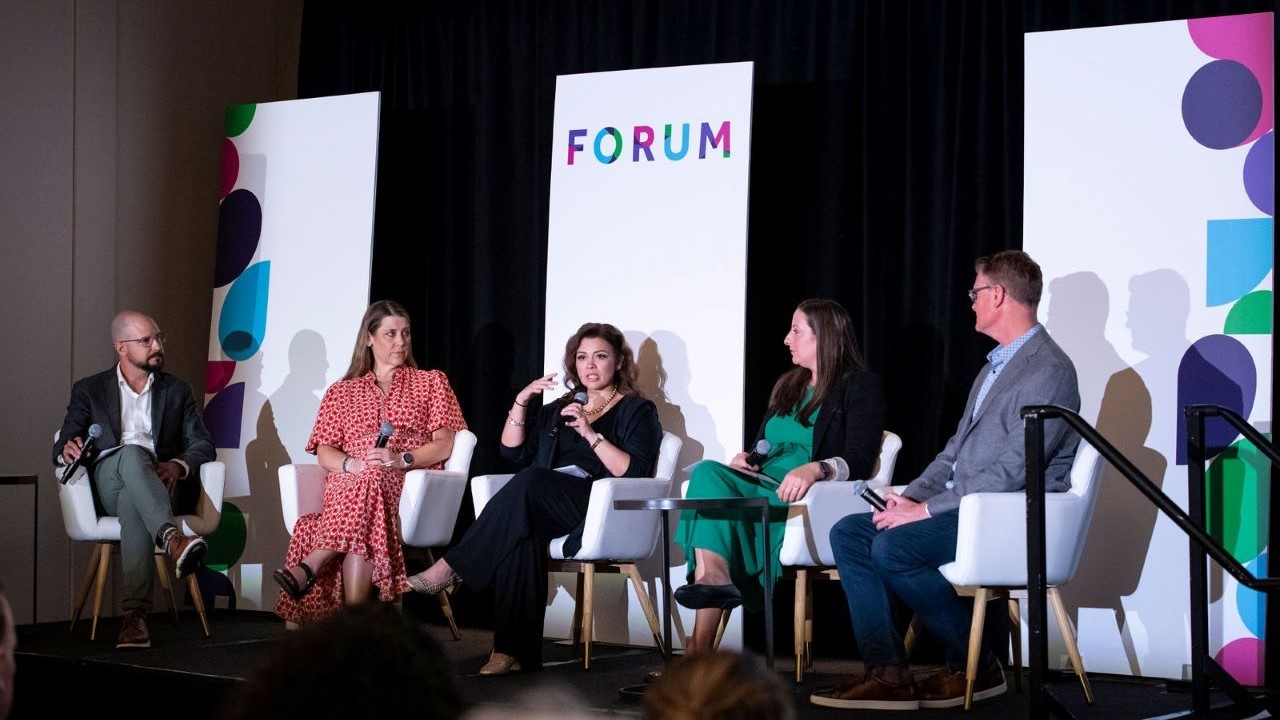

Elevating employee wellness and experiences for a dispersed workforce
Scott Floyd, Global Benefits Leader, Cisco
Sonja Kellen, General Manager, Global Health & Wellbeing, Microsoft
Agnes Quiggle, Health Transformation Collaborative Leader, Mercer
Jessy Rosales, Head of Total Rewards, North America, SAP
Craig Root, Senior Vice President, Employer, Teladoc Health
According to the American Psychological Association, 92% of workers said it’s very important or somewhat important to them to work for an organization that values their emotional and psychological well-being and employees are more likely to recommend a company that supports well-being efforts as a good place to work. However, organizations are having to get creative to ensure effective healthcare experiences for their employees in today’s increasingly dispersed and remote work environment that also meets the needs of a diverse workforce.
How are global organizations rising to this challenge? Craig Root, Senior Vice President, Teladoc Health, sat down with health and benefits leaders from SAP, Cisco, Microsoft and Mercer to explore how organizations are innovating health and wellness programs for employees.
Three best practices emerged from the discussion:
1. Create a culture of wellness
Integrating wellness into all parts of an organization–in its leadership, values and daily practices–creates a culture of wellness that can enhance physical and mental health and boosts job satisfaction.
Sonja Kellen, General Manager, Global Health and Wellbeing, Microsoft, said, “At Microsoft, our mission as a company is to empower every person and organization on the planet to achieve more. So if our focus is on achieving more, it means we need to invest more wisely with our existing employees, and well-being is really at the center of all that. Our well-being strategy is to foster a culture that’s inclusive, holistic and engaging.”
Jessy Rosales, SAP’s Vice President, Total Rewards, North America, agreed with Kellen and added, “We have to get the buy-in of our leaders and make sure that we’re all marching in the same direction and make sure that we are all walking the walk, you know, role modeling and so on.” Rosales emphasized the importance of having leadership buy-in because it sets the tone for the entire organization and helps drive the integration of those health and wellness initiatives into the company’s culture.
Leadership’s commitment can influence employee attitudes, promote engagement and ensure proper investment in these programs for them to be effective. It also signals to employees that their well-being is a top priority, and when wellness is a core value of an organization, employees are more likely to feel appreciated and supported leading to reduced stress and burnout.
Additionally, an organization that prioritizes wellness and makes it an integral part of the culture and is committed to employee well-being reaps the benefits of these actions with lower absenteeism, increased attraction and retention, and improved business results.
2. Embrace multiple modes of communication and engagement
When it comes to connecting with employees across time zones, cultures, languages, locations and work environments, embracing a variety of modes of communication and engagement tactics can help meet employees where they are at the moment when they are most likely to engage.
There is no one size fits all when it comes to employee engagement. Scott Floyd, Global Benefits Leader at Cisco, emphasized this point, saying, “Sometimes, [engagement] leans toward easy self-service and discoverability, and other times it leans toward higher-touch, hands-on communication.” He also spoke about the differences between how certain age groups prefer to be engaged with, differences in language and differences in technological skill.
Kellen agreed and emphasized the importance of meeting people where they are and providing them with the right information at the right time using a multimodal approach, which leverages various forms of communication and ways of interaction to address differing needs and preferences. Using slides, having leadership touch on certain programs, hosting webinars, sending newsletters and emails, engaging business resource groups to promote wellness initiatives and using AI to proactively nudge people are all great examples of engagement tactics.
Varied methods of getting information across through different channels help employees better understand and retain knowledge in a way that works best for them. A multimodal approach to engagement ensures health and wellness program information reaches everyone effectively.
3. Keep it simple and personal
Employers continue to want to make understanding and accessing care options easier for employees.
According to a recent Teladoc Health survey, 73% of respondents anticipate evaluating virtual care vendor consolidation in the next 12 months. Consolidating point solutions will help simplify the user experience as well as how employees access care.
Agnes Quiggle, Health Transformation Collaborative Leader, Mercer, asked, “Where do we start to combine and start integrating some of those solutions into a broader offering? And when do point solutions really make sense versus coordinating and integrating them into a broader offering?”
Having an integrated care vendor can enhance patient outcomes, streamline processes and simplify the employee experience. Integrated care also provides a more comprehensive and coordinated experience for employees.
Another aspect to look at is personalization. Quiggle added, “[The] first thing that comes to mind is personalized prevention, and there’s a ton of things coming down the pike that will allow each individual to really be treated as an individual.” Quiggle emphasized that it’s important to focus on the person, specifically who they are and their health goals, versus only looking at them through the lens of their condition or disease.
This approach also allows for a stronger patient-provider relationship due to the person feeling heard and understood. Personalized care respects the individual, empowering them in their healthcare journey. Together, these elements foster a more effective, efficient, compassionate and patient-centered healthcare experience.









